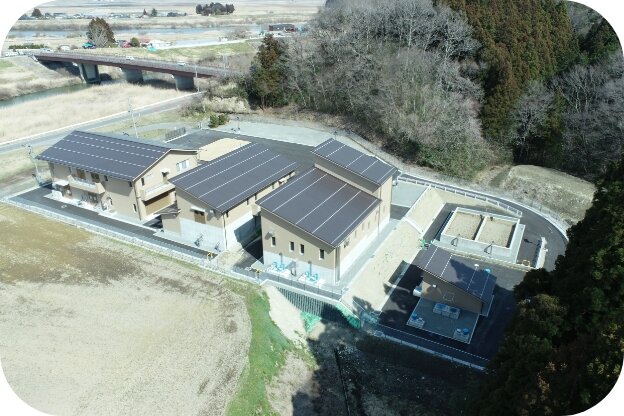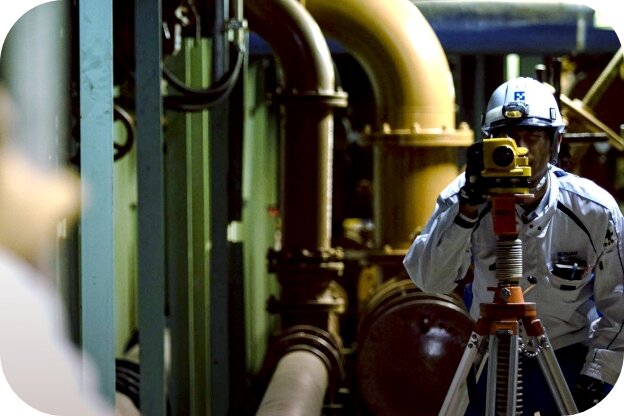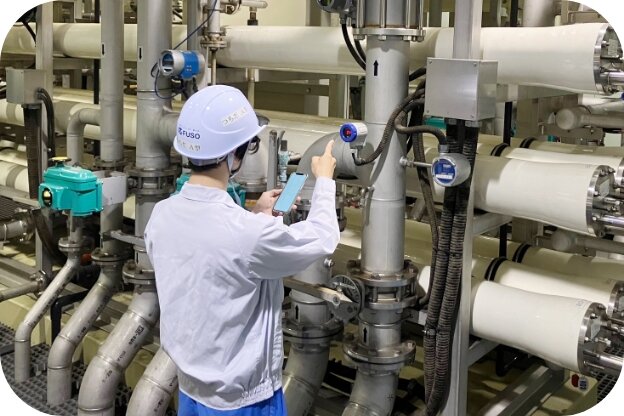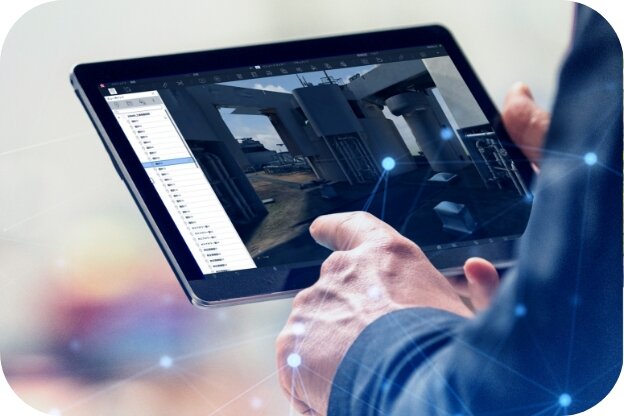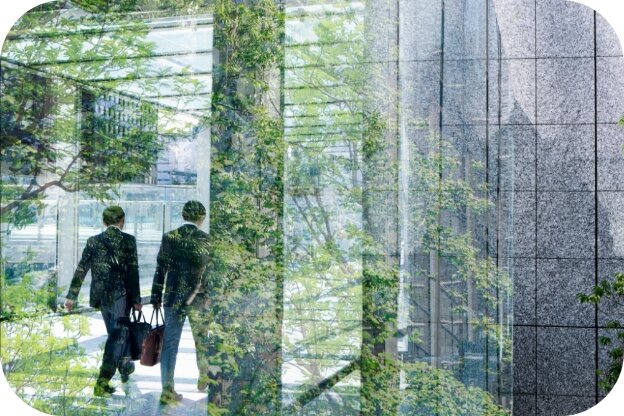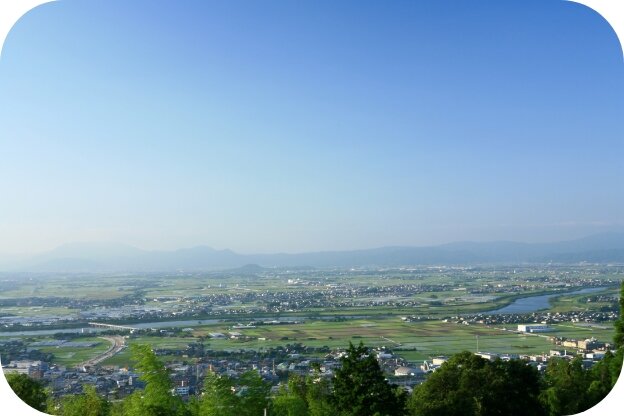


Promotion of ZEB Buildings
ZEB Planning for Both Sustainability and Comfort
Net Zero Energy Buildings, or ZEBs, have been attracting a great deal of attention in the quest to achieve carbon neutrality. The aim of ZEBs is to achieve a comfortable environment while reducing the annual energy consumption of the buildings in question to zero on a net basis. As a certified ZEB Planner, FUSO is working to solve energy problems faced in each community. FUSO is committed to bringing about the era of zero energy for buildings precisely because of our commitment to stay attentive to our communities through our total engineering services.
Order target: Making ZEB-related projects at least 50% of the design work received by Fuso in FY2025
We will work to help the spread of ZEBs toward achieving carbon neutrality.
- Context of ZEBs
- ZEB Planner
- Benefits of ZEB Conversion
- The Four Stages of ZEB Classification
- FUSO's Building Equipment Business
Context of ZEBs
In Japan, many efforts are underway to achieve carbon neutrality by 2050, referring to the state of virtually zero greenhouse gas emissions. Japan's national energy plan also sets a policy goal of achieving ZEB on average in new buildings by 2030.
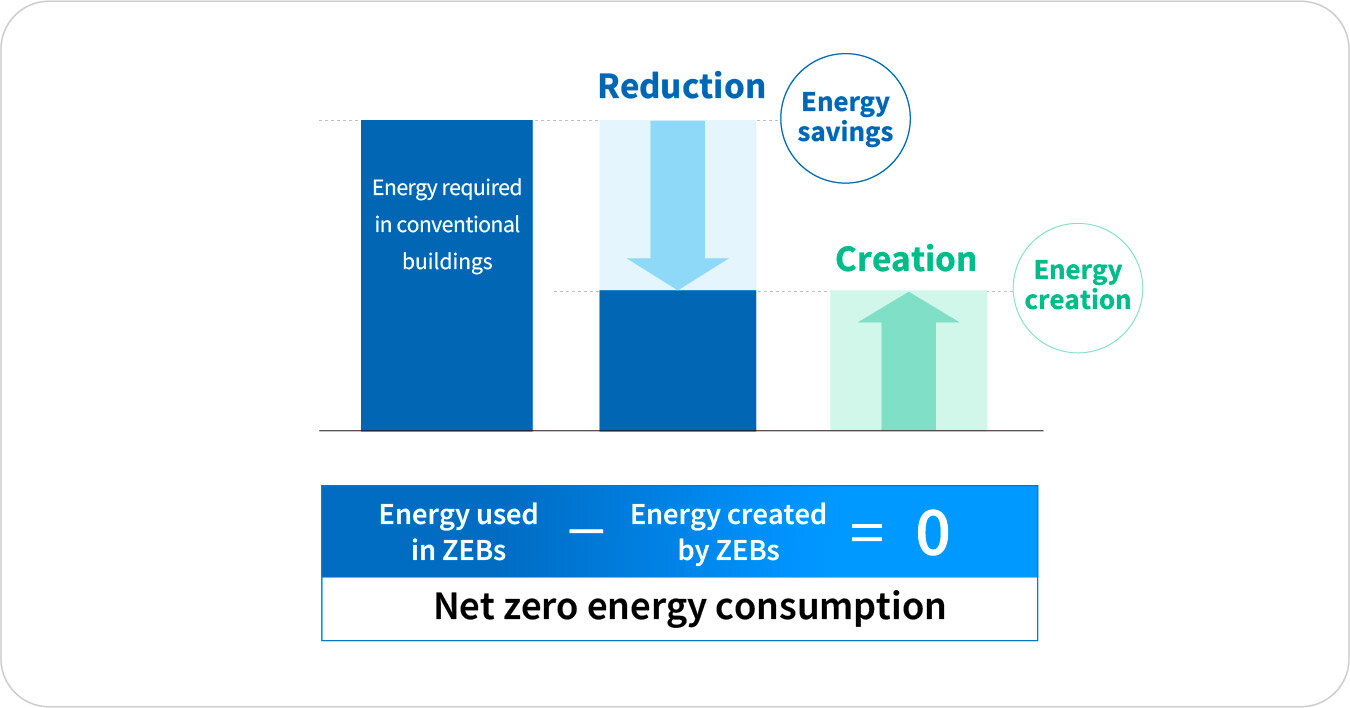
ZEB Planner
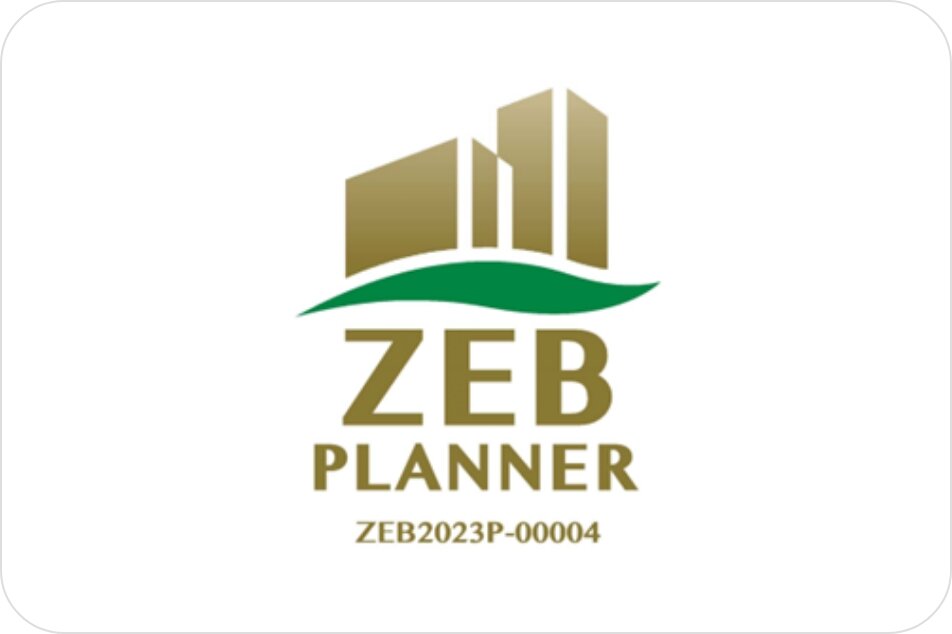
An Expert in ZEB Planner Services
FUSO has acquired and registered the ZEB Planner certification, which is a proof of high technological strengths in terms of design, application, operation, and performance. ZEB proof of concept projects require the involvement of a certified ZEB Planner in order to apply for subsidies. FUSO provides total customer support, from introduction to application and other support services.
What is a ZEB Planner?
A ZEB Planner is defined as a business entity that has a consultation service for the realization of ZEBs, provides business support (architectural design, equipment design, design and construction, energy-saving design, consulting, etc.) to the general public by utilizing official ZEB design guidelines and technologies and design knowledge for designing ZEBs and energy-saving buildings, and which publicizes its activities. (Source: ZEB PORTAL ZEB Planner System, Ministry of the Environment)
Benefits of ZEB Conversion
Stakeholder Benefits
The benefits of implementing ZEB design are not limited to environmental protection in the interest of a decarbonized society. It offers improved comfort as well as reduced utility costs, higher real estate value, and better business continuity in the event of a disaster. Though the benefits gained by ZEB design will vary depending on the kind of stakeholder, which includes a building's owners, workers, visitors, and others, this kind of design still elevates building value for all stakeholders.

1. Reduced Utility Costs
By combining energy conservation and energy creation through high-efficiency building equipment, energy use in buildings, and therefore their utility costs in operation, can be significantly reduced.
2. Greater Comfort
ZEB design enables the creation and upkeep of comfortable living environments while saving energy through the appropriate use of natural energy and other means.
3. Higher Real Estate Value
Environmentally friendly buildings are also high value-added buildings that meet social needs, elevating brand image and leading to higher real estate value. This also offers a competitive edge when attracting tenants, improving a town's attractiveness.
4. Better Business Continuity
Enabling operation at lower energy consumption levels facilitates easier upkeep of building functionality. Even partial energy independence can help avoid power outages in the event of a disaster, leading to enhanced risk response capabilities.
The Four Stages of ZEB Classification
Four-Stage ZEB Classification Based on Energy Consumption
Buildings are classified in one of four ZEB stages in order to more clearly promote the spread and achievement of ZEBs among a wider range of buildings. A stage is assigned to each building based on its achievement status toward net zero energy use, calculated from the amount of energy saved and the amount of energy created.
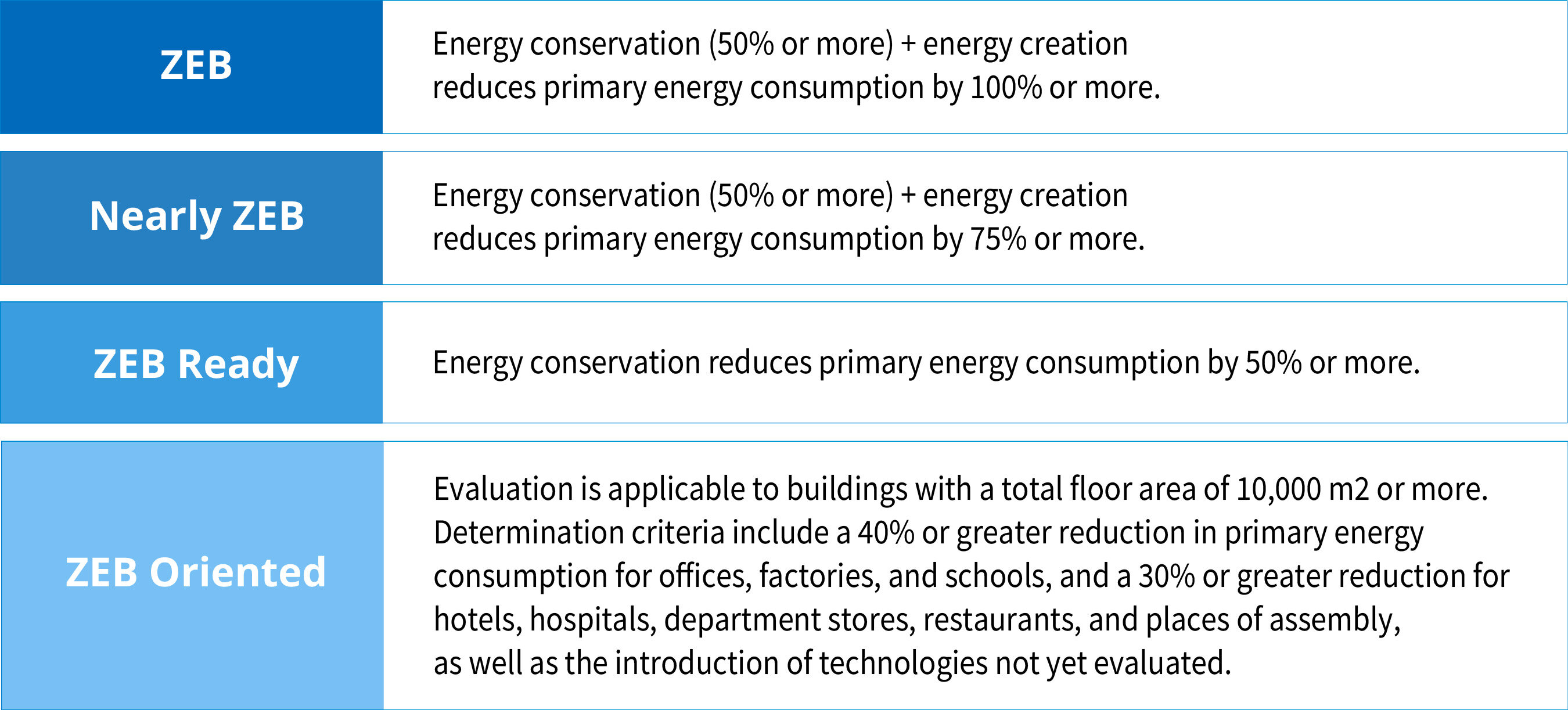
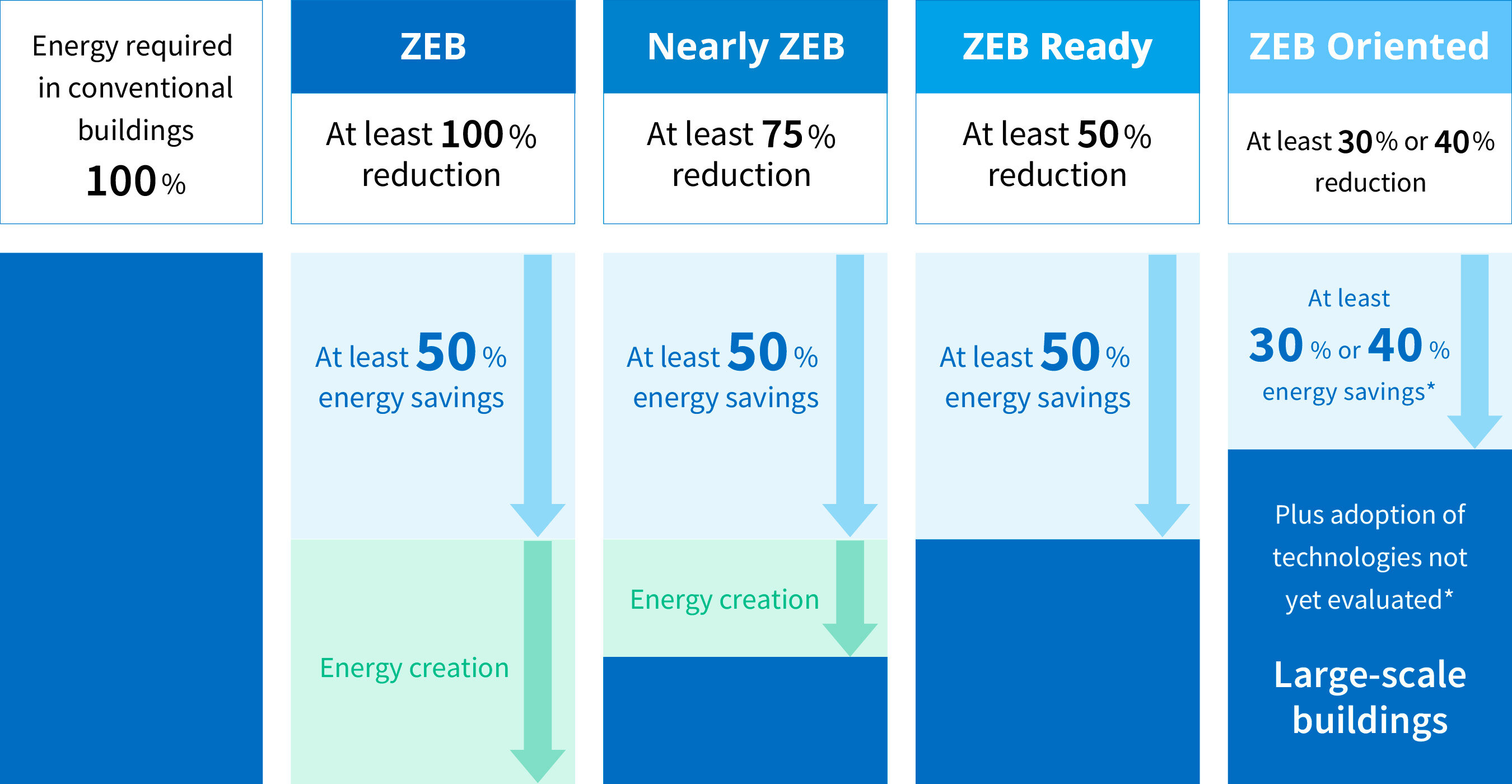
*Technologies not yet evaluated by WEBPRO: Outdoor air volume control based on CO2 concentration; natural ventilation systems; advanced air conditioning pump control (variable water volume (VWV) control, appropriate capacity allocation, end differential pressure control, water supply pressure setting control, etc.); advanced air conditioning fan control (variable air volume (VAV) control, appropriate capacity allocation, etc.); cooling tower fan/inverter control; lighting zone control; free cooling; desiccant air conditioning systems; cooling/heating trench systems; hybrid hot water supply systems, etc.; advanced geothermal heat utilization (hot water heat pumps, open loop systems, direct use of geothermal heat, etc.); advanced cogeneration facilities (steam use in adsorption refrigerators, fuel cells, area energy networks, etc.); natural lighting systems; ultra-high efficiency transformers; heat recovery heat pumps
Energy consumption performance standard based on the Act on the Improvement of Energy Consumption Performance of Buildings
Source: Drafted based on the ZEB PORTAL website, Ministry of the Environment
http://www.env.go.jp/earth/zeb/about/05.html
FUSO's Building Equipment Business
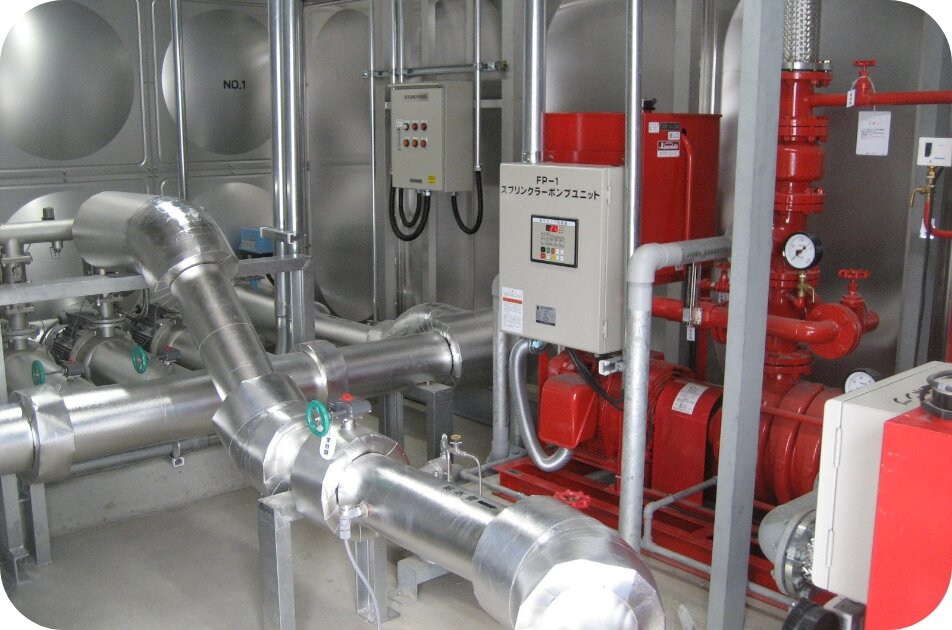
In addition to new construction and renovation work, we also provide total engineering services in the area of maintenance to ensure both a comfortable environment and sustainability.

